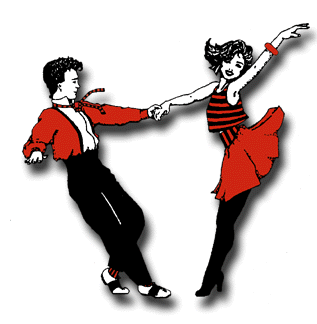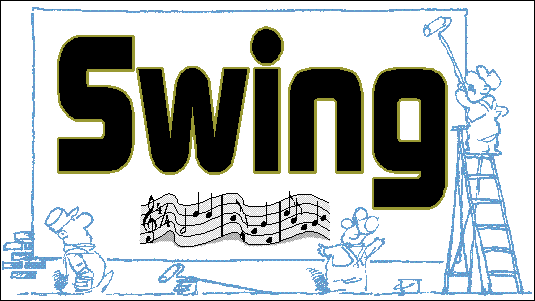Swing
 The term "swing dance" is commonly used to refer either to a group of dances developing in response to swing music in the 1920s, 30s and 40s, or to lindy hop, a popular partner dance today. While the majority of swing dances began in African American communities as vernacular African American dances, there were a number of forms which developed within Anglo-American or other ethnic group communities. Balboa is one of the most commonly cited examples.
The term "swing dance" is commonly used to refer either to a group of dances developing in response to swing music in the 1920s, 30s and 40s, or to lindy hop, a popular partner dance today. While the majority of swing dances began in African American communities as vernacular African American dances, there were a number of forms which developed within Anglo-American or other ethnic group communities. Balboa is one of the most commonly cited examples.
Though they technically preceded the rise of swing music, and are commonly associated with Dixieland jazz which developed in New Orleans in the south of the United States, dances such as the black bottom (dance), charleston (dance) and tap dance are still considered members of the swing dance family. These sorts of dances travelled north with jazz to cities like New York, Kansas City, and Chicago in the Great Migration (African American) of the 1920s, where rural blacks travelled north to escape persecution, Jim Crow laws, lynching and unemployment in the South during the Great Depression.
 Swinging jazz music features the syncopated timing associated with African American and West African
music and dance - a combination of crotchets and quavers which many swing dancers interpret as 'triple steps' and 'steps' - yet also introduces changes in the way these rhythms were played - a distinct delay or 'relaxed' approach to timing. Swinging jazz developed from Dixieland jazz, and travelled north with black dancers during the Great Migration.
Swinging jazz music features the syncopated timing associated with African American and West African
music and dance - a combination of crotchets and quavers which many swing dancers interpret as 'triple steps' and 'steps' - yet also introduces changes in the way these rhythms were played - a distinct delay or 'relaxed' approach to timing. Swinging jazz developed from Dixieland jazz, and travelled north with black dancers during the Great Migration.
Today there are swing dance scenes in many developed Western and Asian countries throughout the world, and though each city and country varies in their preferences for particular dances, lindy hop is often the most popular. It is important to note, though, that each local swing dance community has a distinct local culture and defines "swing dance" and "appropriate" dance music in different ways.
